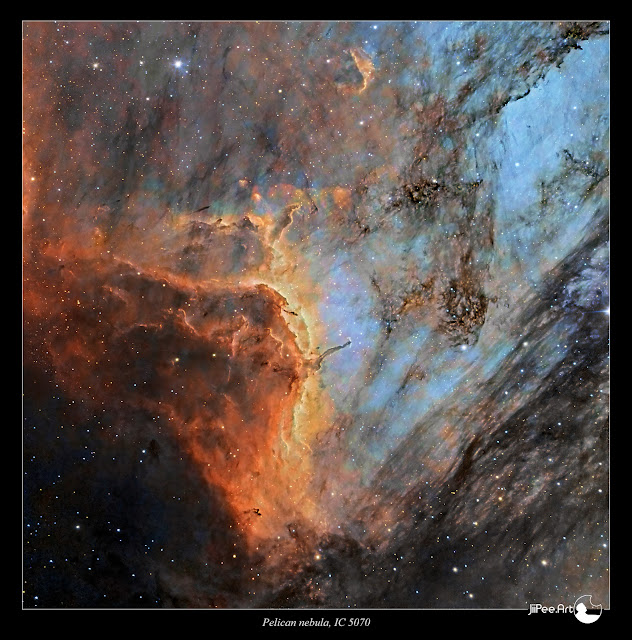COPYRIGHT, PLEASE NOTE
Wednesday, October 9, 2024
FIRST LIGHT FOR MY NEW IMAGING SETUP
After a couple of years I'm able to publish a bran new photo!
This is a first light to my new imaging setup, it took couple of years to get it up and running.
I selected a relatively bright target since I wanted to test the system as soon as possible. The Pelican Nebula in constellation Cygnus, the Swan, is my first target.
The new system has a focal length of 2730mm with a massive 0.7 focal reducer for the Celestron EDGE 14" telescope. The new camera has 12 micron pixel size and it gives me an image scale of 0.91 arc seconds/pixel. (That's perfect for my seeing conditions.) The field of view spans 46.1 x 46.1 arcminutes of sky. (For a scale, Full Moon covers 30x30 arcminutes of sky)
The native resolution of the Apogee Alta U9000M camera is 3056x3056 pixels. I'm using a stacking method that doubles the measures by using the "Drizzle" while imaging. The final image is then 6112x6112 pixels.
Only five hours of light from an ionized hydrogen (H-alpha) is used for this photo. Other two color channels, O-III and S-II, are borrowed from my older long focal length photo of this target taken with Celestron EDGE 11" telescope.
Pelican Nebula
Click the photo to see a 2000x2000 pixel version

Click the image to see a full size version
This photo is in mapped colors from light from an ionized elements, hydrogen = green, sulfur=red and oxygen=blue. (H-alpha, S-II and O-III)
Click the image to see a full size version, 3056x3056 pixels












No comments:
Post a Comment